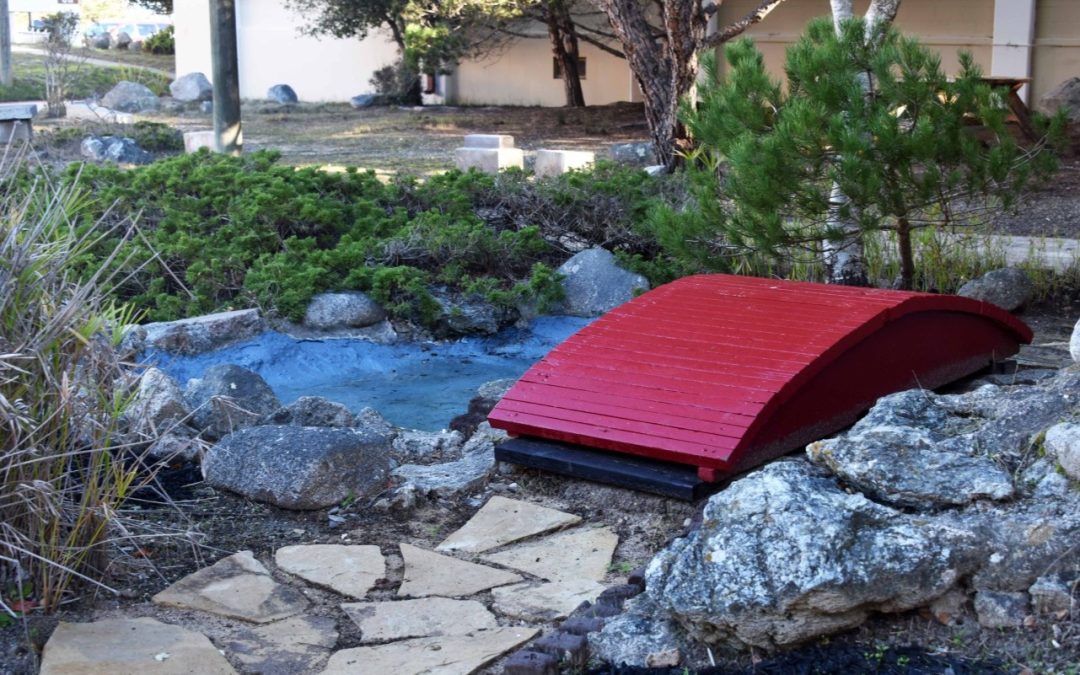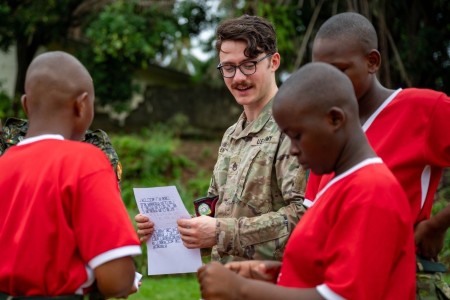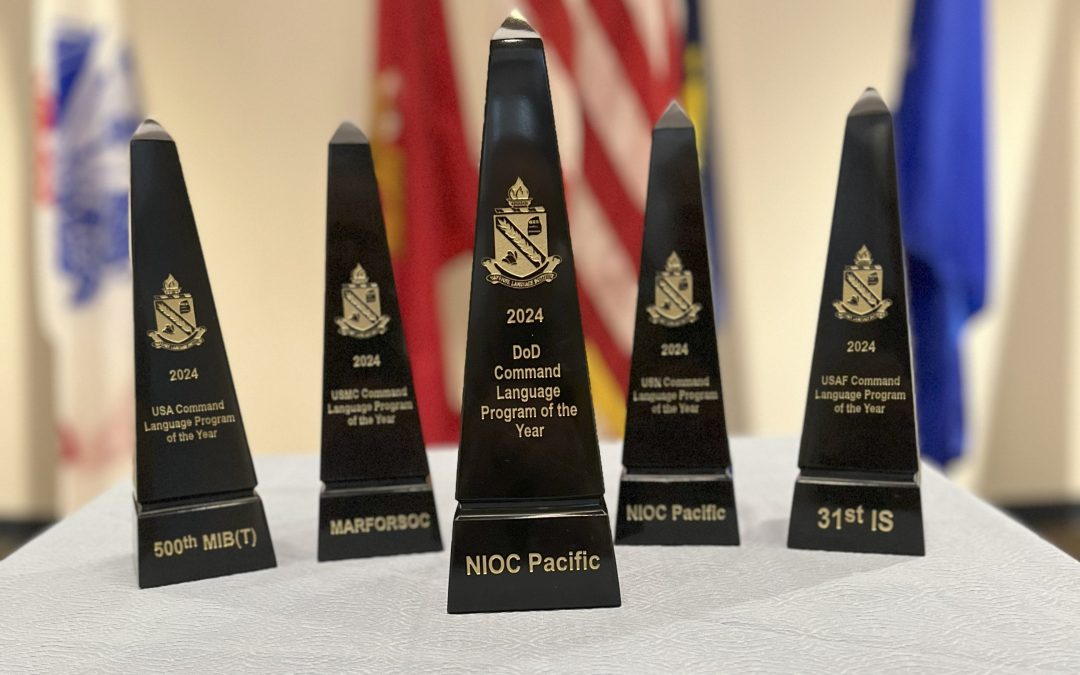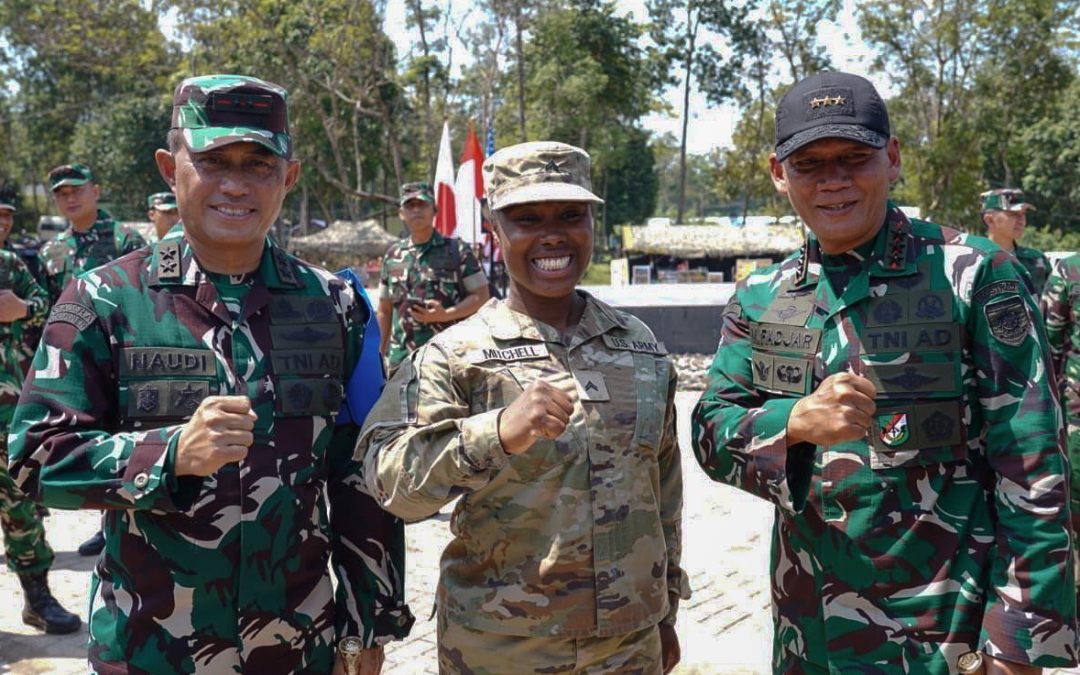By Patrick Bray
DLIFLC Public Affairs

Marites Castro, a Tagalog teacher at the Defense Language Institute Foreign Language Center, came to the institute after meeting U.S. military linguists in the Philippines. The example of the Tagalog linguists, all graduates of DLIFLC, inspired Castro to teach at the institute someday. (Photo by Amber K. Whittington, DLIFLC Public Affairs)
MONTEREY, Calif. – It is an unseasonably hot day in April on the Presidio of Monterey, California, and Marites Castro’s students are jumping off desks. The Tagalog language teacher does not discourage them. She shouts praises and encourages them to keep going.
“Last year we did a bamboo traditional Singkil dance originating from the Lanao provinces located in Mindanao, southern Philippines, but this year we will do the bench dance. It will be very good. You’ll see,” said Castro, who teaches the most common language of the Philippines.
About a month away is Language Day, the Defense Language Institute Foreign Language Center’s annual open house and showcase for multiple languages and cultures from around the world. Students practice in their spare time a dance or custom from the culture they are studying to present on Language Day.
“These students are new, but on Language Day they’ll be ready,” said Castro.

Students play a traditional Filipino game at the Defense Language Institute Foreign Language Center. Marites Castro, a Tagalog teacher came to the institute after meeting U.S. military linguists in the Philippines. The example of the Tagalog linguists, all graduates of DLIFLC, inspired Castro to teach at the institute someday. (Photo provided by Marites Castro)
Castro, who is from Manila’s metropolitan area, loves teaching so much that she left her home and her close-knit family in the Philippines for the U.S. so that she could teach Tagalog.
“My parents were very into education. They valued it and no matter how simple life was, they wanted us to get to college,” said Castro, who has a Bachelor of Arts from the University of Santo Tomas and a law degree. She was working on her thesis for a Master of Arts in Special Education at the University of the Philippines prior to coming to the U.S.
“It is a value in the Philippines that you help one another,” Castro added. “When I graduated I helped some of my siblings to go to school.” She has seven siblings, of whom she is the second oldest.
“I did not really plan to be a language instructor. I was in college for law when my father asked if I would like to try teaching,” said Castro. “I tried and I loved it.”
Approximately 57 million people speak Tagalog worldwide. The population of the Philippines is about 100 million people, creating a lot of opportunities for Tagalog language learning.
Castro taught Tagalog to adults, which she found challenging at times. Some of her students were immigrants or spoke an indigenous language from rural areas. When she moved from one language school to another, she met U.S. military linguists, all graduates of DLIFLC in Tagalog, who were on an immersion in the Philippines.
“The language those students produced was very romantic to me because they spoke like they are reciting a poem or sometimes a dictionary,” said Castro. “I said this is really good and I was wondering where and what school in the U.S. is teaching students like this.”
Much of spoken Tagalog in the Philippines is saturated with English and Spanish loan words. Castro compared the U.S. military linguists’ speech to a book or newspaper. One of the linguists, recognizing Castro’s passion for pure Tagalog, encouraged her to try to get to DLIFLC. She researched how via the internet and was pleased with what she found.
“I said wow. This is very grand. It’s a very beautiful school and it’s a military school. The values, the training, the discipline – I said, Lord I feel like going there. I would like to go, but how?” asked Castro.
At that time, in the early to mid-2000s, many Filipinos would come to the U.S. for special education teaching jobs or nursing careers. Outside of that, immigration options were limited.
“The only job I wanted to do is teaching my language,” said Castro. “If I could not teach Tagalog, I would not go.”

Marites Castro and her students write names in Tagalog during Language Day at the Defense Language Institute Foreign Language Center. Castro a Tagalog teacher came to the institute after meeting U.S. military linguists in the Philippines. The example of the Tagalog linguists, all graduates of DLIFLC, inspired Castro to teach at the institute someday. (Photo provided by Marites Castro)
In 2007, Castro began asking how she could get to DLIFLC and toward the end of the year she was notified of an opening. She gathered and submitted all of the paperwork and then waited.
Castro was invited to an oral proficiency interview in English and Tagalog. Afterwards, there was a long silence in which she did not hear anything. The Great Recession of 2007-2009 had a strong impact on hiring.
“I did not know if I did well or not. I did not get anymore feedback,” said Castro.
In 2008 the recession was deeply felt. The year passed without a word. Castro continued with a previous, ongoing interview for a teaching position in Indonesia.
“I went to Indonesia to checkout where I would be working if I went there. I was introduced to the students,” said Castro.
Later, she called home.
“My sister told me on the phone to come back. DLI just called,” said Castro. “They wanted to know why I was in Indonesia when the work is in the U.S. They wanted to talk.”
Castro returned to the Philippines, but after hearing positive news in her process, she was met again with a period of uncertainty.
“All I could do was to trust God in this trying moments,” said Castro.
Finally, the seemingly impossible worked out for her when the paperwork came.
In 2010, Castro settled in Marina, California, as one of DLIFLC’s newest teachers. Now, she has a teaching career that she really loves.
“I did not really have a hard time adjusting because this is my professional work. The students are really very good. They have discipline and they learn.”
Back to Language Day preparations, Castro never misses a moment to spend with her students. She is pleased with how quickly her students not only pick up the language, but learn cultural things such as traditional dances.
“I never get tired of waking up every morning to teach at DLIFLC,” said Castro. “One thing I would like to share that keeps me excited to teach. Every time I look back, I realize the wait could be long and uncertain, but it is meant to build character … all my waiting finally paid off.”




